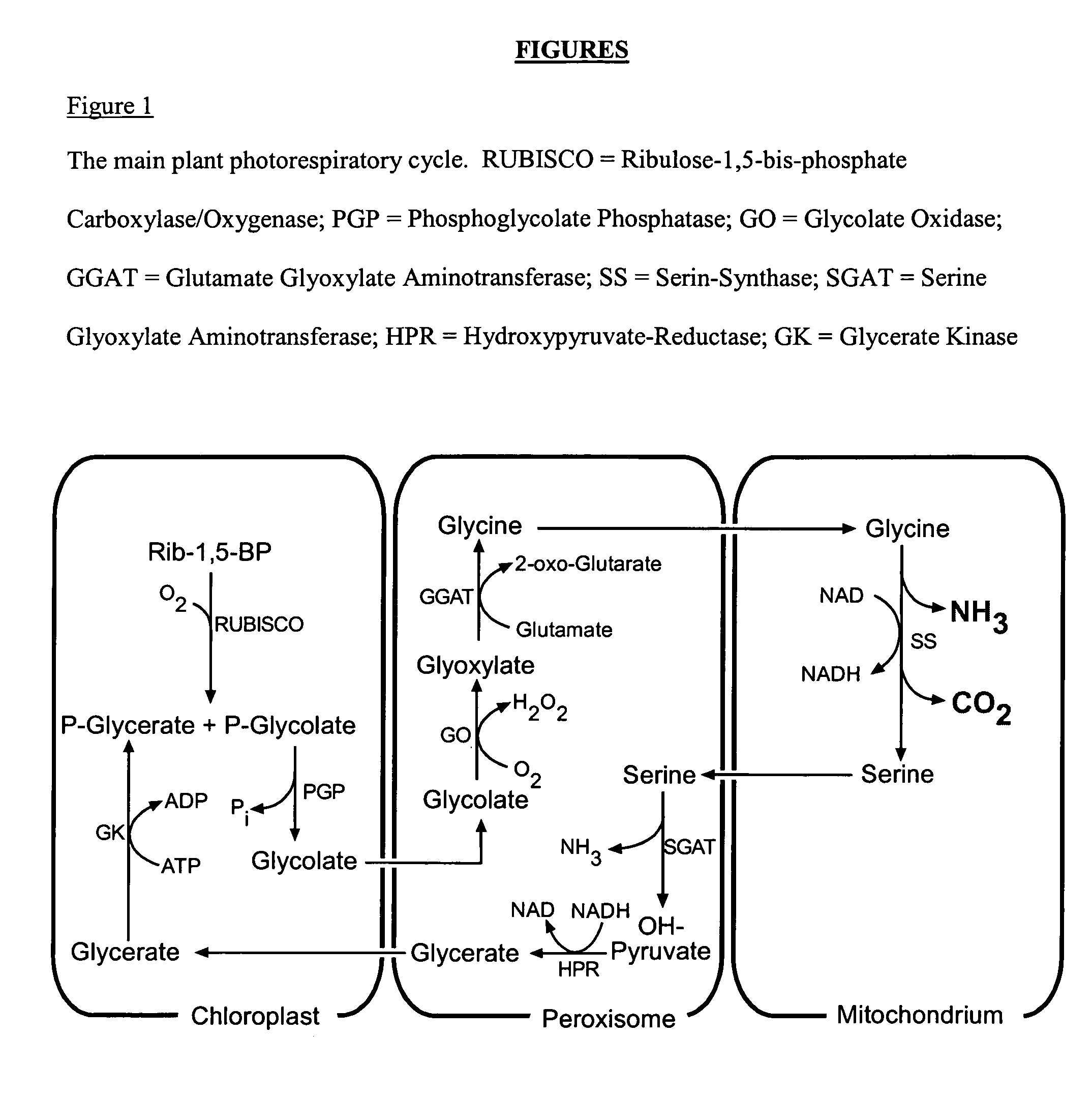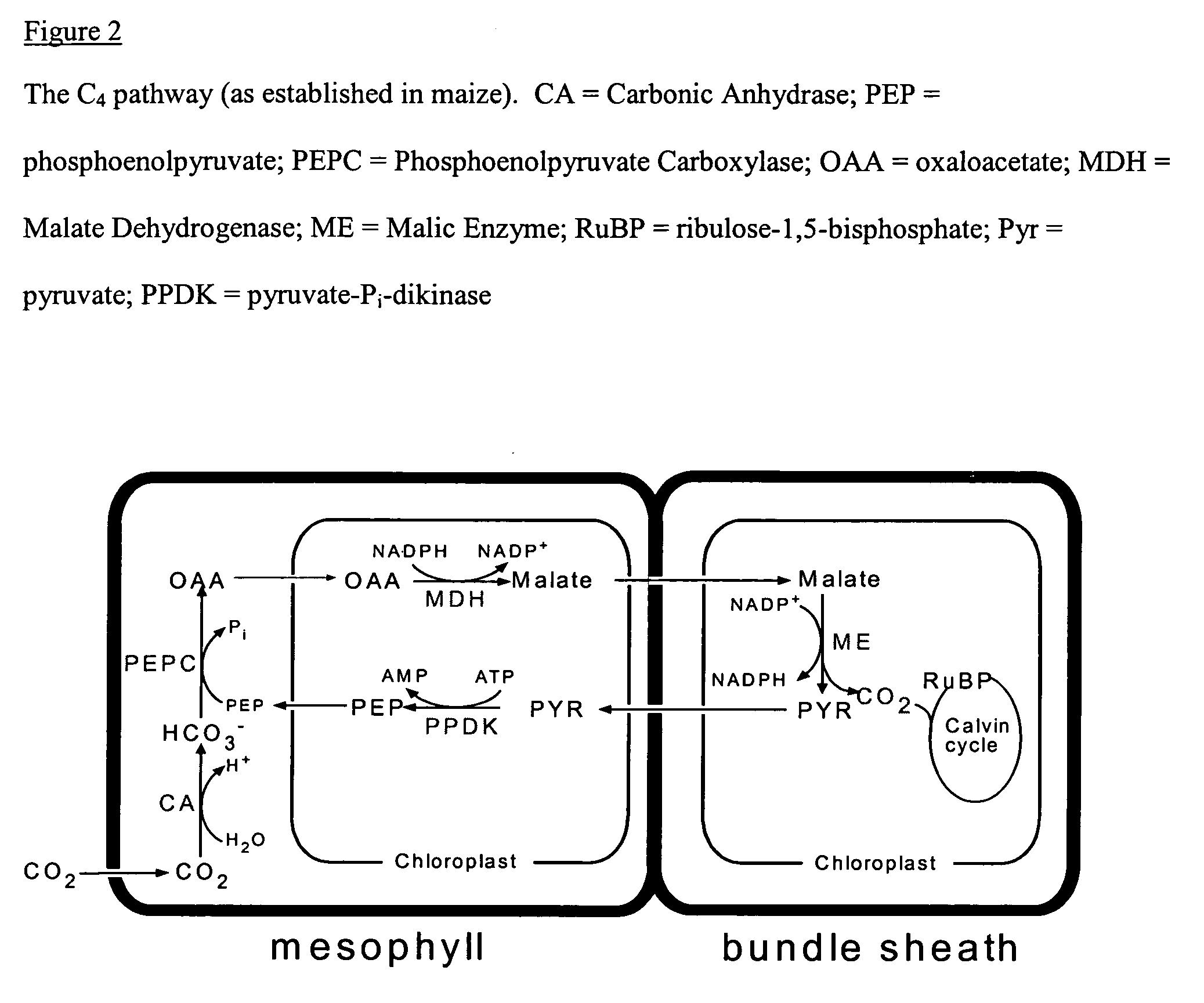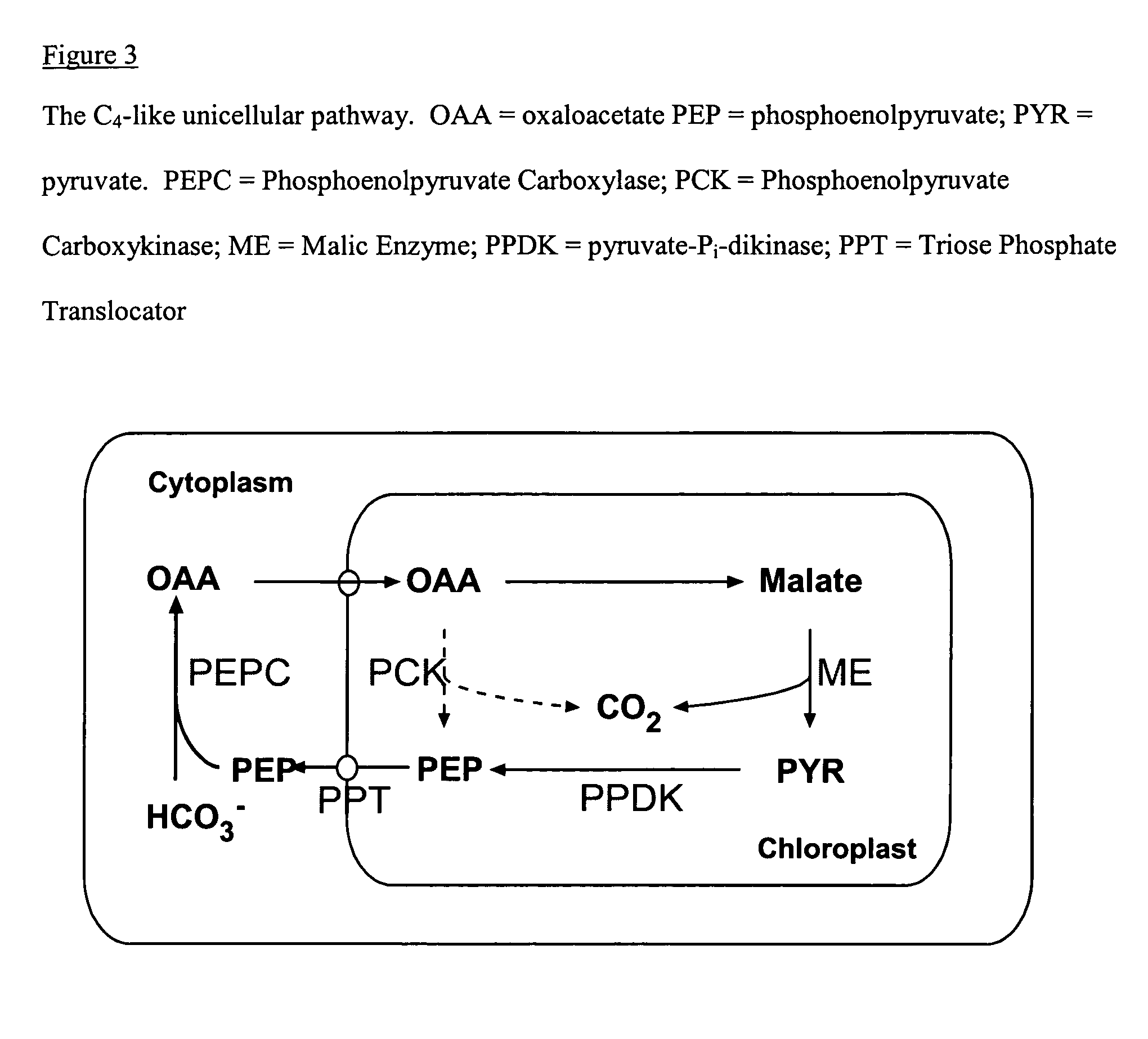Method for producing plants with suppressed photorespiration and improved CO2 fixation
a technology of co2 fixation and plant growth, which is applied in the direction of fused cells, organic chemistry, lyase, etc., can solve the problems of reducing the productivity of crop plants, the approach is not applicable to the large open area used for agricultural production, and no method has been provided to improve growth, productivity and/or yield of crop plants. , to achieve the effect of suppressing photorespiration, increasing productivity and/or yield of crop plants, and suppressing photorespiration
- Summary
- Abstract
- Description
- Claims
- Application Information
AI Technical Summary
Benefits of technology
Problems solved by technology
Method used
Image
Examples
example 1
[0045]Amplification of Genes from E. coli involved in Glycolate Metabolism
[0046]The genes encoding tartronic semialdehyde reductase, glyoxylate carboligase, and the open reading frames encoding the D, E, and F polypeptides from the glycolate oxidase operon were amplified from the genome of E. coli using the PCR method. Sequences were derived from public databases. The oligonucleotides were complementary to the start and the end of the coding regions, respectively, as provided in the sequence listing herein.
example 2
[0047]Amplification of a cDNA Encoding Human Glyoxylate Reductase
[0048]The cDNA encoding glyoxylate reductase was amplified from human liver mRNA using the “Reverse-Transcriptase-PCR-method”. Sequences were derived from scientific literature (Rumsby and Cregeen, 1999). The mRNA was reverse transcribed using oligo-dT oligonucleotides as a start and the PCR was performed with oligonucleotides complementary to the start and the end of the coding regions, respectively, as provided in the sequence listing herein.
example 3
[0049]Amplification of a cDNA Encoding a Homologue to the E. coli glcD open Reading Frame from Arabidopsis thaliana
[0050]An open reading frame with homology on the protein level to the glcD open reading frame from the glc operon from E. coli was identified as a genomic sequence from Arabidopsis thaliana in a public database. RNA was isolated from young leaf tissue and the coding sequence was amplified using the “Reverse-Transcriptase-PCR-method”. The mRNA was reverse transcribed using oligo-dT oligonucleotides as a start and the PCR was performed with oligonucleotides complementary to the start and the end of the coding regions, respectively, as provided in the sequence listing herein.
PUM
| Property | Measurement | Unit |
|---|---|---|
| nucleic acid | aaaaa | aaaaa |
| resistance | aaaaa | aaaaa |
| concentration | aaaaa | aaaaa |
Abstract
Description
Claims
Application Information
 Login to View More
Login to View More - R&D
- Intellectual Property
- Life Sciences
- Materials
- Tech Scout
- Unparalleled Data Quality
- Higher Quality Content
- 60% Fewer Hallucinations
Browse by: Latest US Patents, China's latest patents, Technical Efficacy Thesaurus, Application Domain, Technology Topic, Popular Technical Reports.
© 2025 PatSnap. All rights reserved.Legal|Privacy policy|Modern Slavery Act Transparency Statement|Sitemap|About US| Contact US: help@patsnap.com



